This afternoon I watched the BBC broadcast of the Six Nations rugby match between Scotland and Ireland.
The following three paragraphs have been taken from http://www.beautifulbritain.co.uk/htm/outandabout/eyam.htm
The site contains more information and relevant details.
‘It’s hard to imagine that the quiet village of Eyam, off the A623 in Derbyshire, could have such a fascinating, yet tragic story to tell. But …. at the end of August 1665 bubonic plague arrived at the house of the village tailor George Viccars, via a parcel of cloth from London. The cloth was damp and was hung out in front of the fire to dry, thus releasing the plague infested fleas. On 7th September 1665, George Viccars, the first plague victim, died of a raging fever. As the plague took hold and decimated the villagers it was decided to hold the church services outdoors at nearby Cucklett Delf and, on the advice of rector William Mompesson and the previous incumbent Thomas Stanley, villagers stayed within the confines of the village to minimize the spread of the disease. Cucklett Delf was also the secret meeting place of sweethearts Emmott Sydall, from Eyam, and Rowland Torre, who was from a neighbouring village. They would call to each other across the rocks, until Emmott Sydall herself became a victim of the plague. Six of the eight Sydall family died, and their neighbours lost nine family members.
To minimize cross infection, food and other supplies were left outside the village, at either the Boundary Stones, or at Mompesson’s Well, high above the village. The Earl of Devonshire, who lived at Chatsworth House, freely donated food and medical supplies. For all other goods, money, as payment, was either purified by the running water in the well or was left in vinegar soaked holes. The Riley graves, close to Riley House Farm and approximately 1/2 mile from the village house the bodies of the husband and six children of farmer Elizabeth Hancock. All died within a week of each other. Because of the high risk of infecting her neighbours she had the traumatic task of burying them all herself. Even more tragic is that the infection probably came to her family when she helped bury another villager’s body. Twelve months after the death of George Vicars, the plague was still claiming its victims, and on 25th August 1666 Catherine Mompesson, wife of the recently appointed rector William Mompesson (aged 28) , died of the plague. She had loyally stayed with her husband and tended the sick, only to become a victim herself.
The Plague in Eyam raged for 14 months and claimed the lives of at least 260 villagers. By 1st November 1666 it had run its course and claimed its last victim. Eyam’s selfless villagers, with their strong Christian convictions, had shown immense personal courage and self sacrifice. They had prevented the plague from spreading to other parishes, but many paid the ultimate price for their commitment.’
It would be fascinating to know whether, when he wrote ‘The Plague’, Albert Camus, Algerian winner of the Nobel Prize for Literature, had known of the story of Eyam during the 17th Century bubonic plague. He has certainly written a convincing account of life during an enclosed confinement at the mercy of such a pestilence.
Camus stated of his work, first published in 1947 that ‘I wish to express through the plague the suffocation which we have all suffered, and the atmosphere of threat and exile in which we have lived.’ This is an undoubted reference to the German occupation of France. On a broader scale the book could be seen as a metaphor for any oppressive invasion.
As usual I will not reveal details of the tale. There is in fact very little plot, but the writer has evoked the initial disbelief, subsequent reluctant acceptance, psychological isolation, resignation, and despair of most, along with exhausting resistance of a few.
I have not read the original French of ‘La Peste’, but I believe Stuart Gilbert’s translation reflects the author’s flowing, insightful, prose.
My Folio Society edition of 1987, which I finished reading today contains an informative introduction by Derek Parker, and is illustrated with
Linda Kitson’s muscular drawings.
The essential difference between the English village and the town depicted by Camus is that of voluntary sacrifice and imposed isolation.
This evening we dined on Mr Chan’s excellent Hordle Chinese Take Away fare, on trays on our laps while we watched a recording of the earlier match between Wales and Italy.
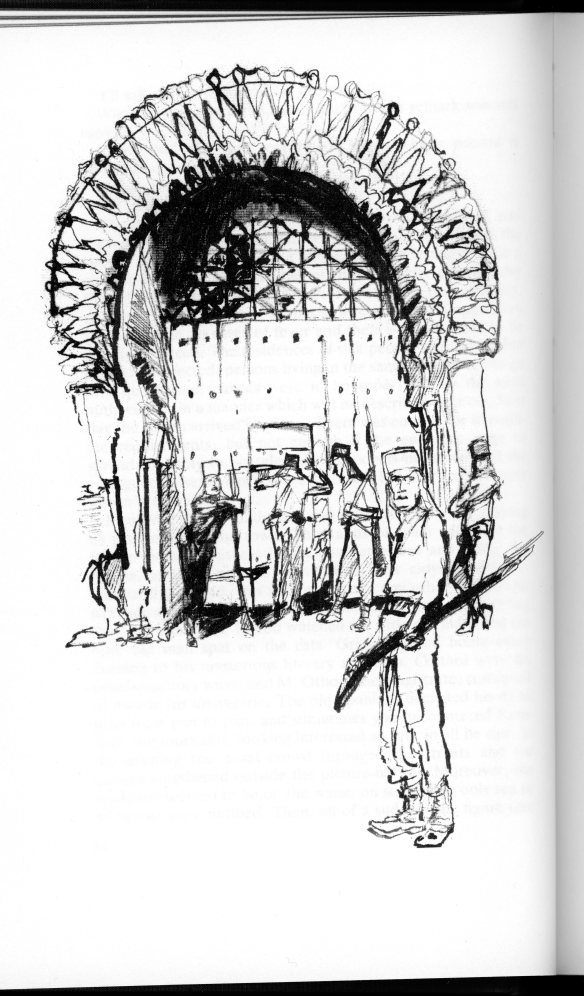

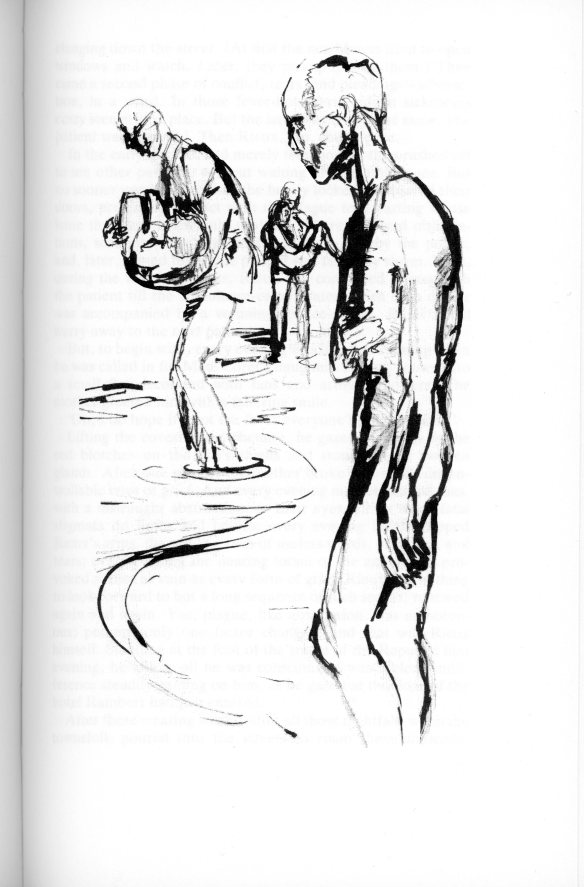

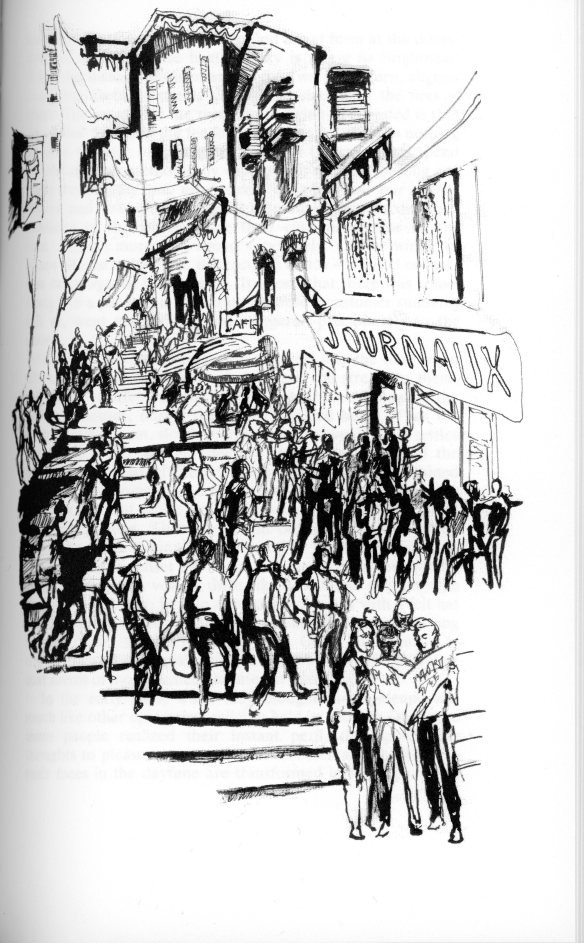
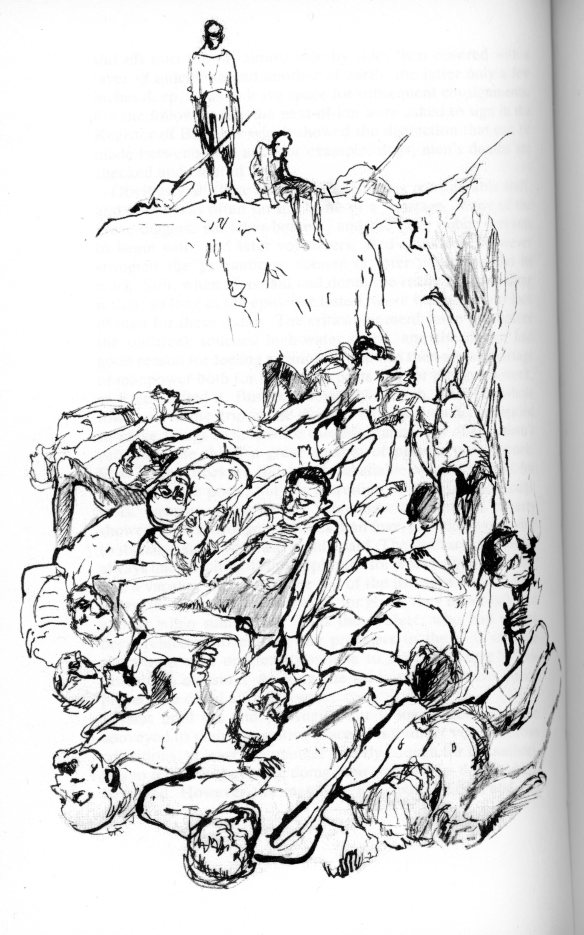
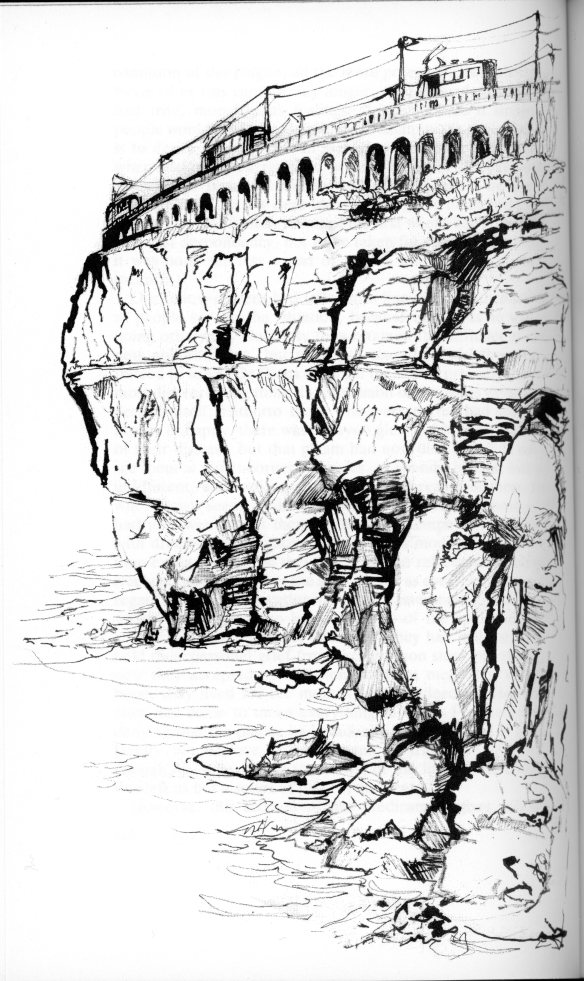
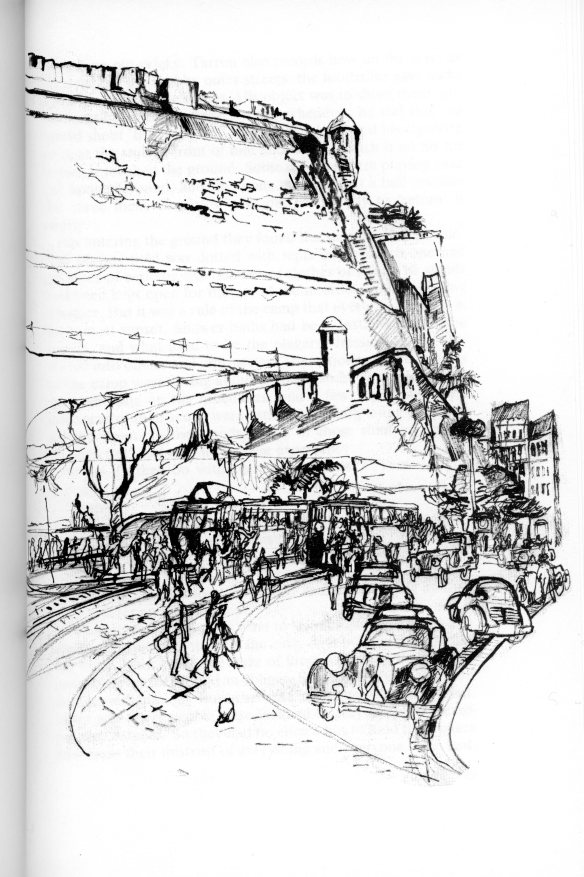
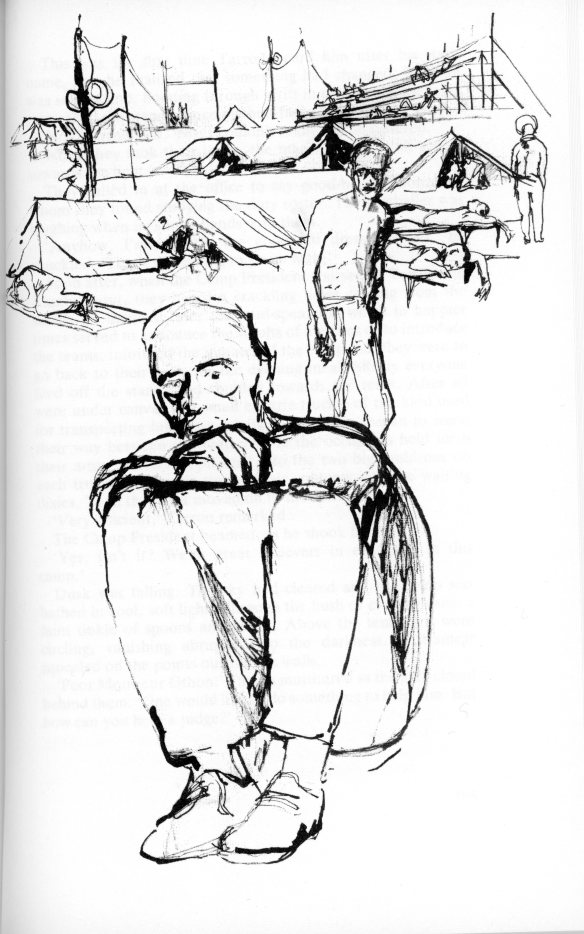
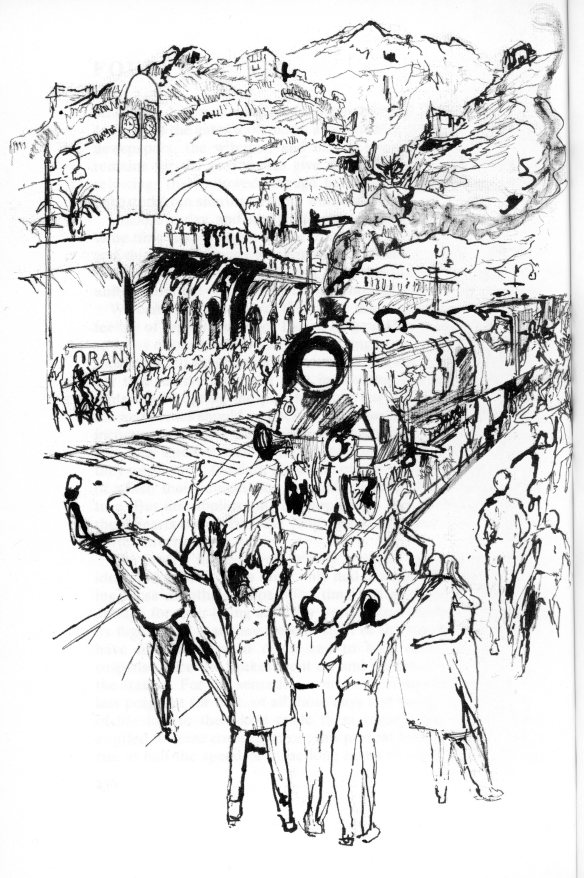
Fascinating story Derrick
Thanks very much, Gary
What a sad tale, Derrick. 🙁
Many thanks, Sylvia
Thank you for this informative and affecting post. The sacrifices of the Eyam villagers deserve to be better known and celebrated.
They do, indeed. I first learned of it on Bargain Hunt. Thanks very much, Leslie
A very drastic portion of European history.
Indeed, GP. Many thanks
Good post Derrick, I enjoyed it, I like the way you make the link.
I’m pleased at that, Andrew. Many thanks
I have never read Camus – and your inclusion of the local history is both moving, terrible and heroic. I’m kind of surprised to think there has never been a play or movie made of the story – it would be rich with all kinds of human experience!
It certainly would, Pauline. Thanks very much
Such a sad story. The drawing are quite moving.
Thanks very much, Jill
Reflecting on the plague seems to me to be a perfect accompaniment to the match.
🙂 Thanks very much, Tootlepedal
Just so fascinating. The sketches are incredible!
Thanks very much, Steve
Camus was my father’s favourite writer, and under his instruction, “The Plague” was the first work of his I read. Isn’t it something that the people of Eyam, so primitive in so many respects compared to us, had such a sophisticated understanding of the “greater good” compared to what is common these days? Thank you for the finely constructed and thought provoking post, Derrick.
Very many thanks, Oglach
That we are no more than soap bubbles has been proved again and again and what has survived the scourge of such pestilences is human fortitude. The blabbering, accidental leaders of the world should read the book at the first possible opportunity.
I’ve always thought they should study history – and so few do, Uma. Many thanks
A sad but interesting bit of history, Derrick.
Indeed, Lavinia. Many thanks
I first read Camus when I was 14 years old. He captured me with his words and word-pics.
And these sketches are powerful. I find myself perusing them to make sure I see every detail. Now I have tears in my eyes.
Important, good post, Derrick.
(((HUGS)))
Very many thanks, Carolyn. X
If you enjoyed “The Plague! you should try his greatest work which is “L’Etranger”. If you have any ability with reading French you might even manage it in the original because the language is so simple and easy to understand.
Thanks a lot, John. I probably could read that. I’ll look out for it. (Read the intro to Gilgamesh last night)
I’ve read a couple of books about the plague. It does make fascinating reading.
Thanks very much, Sue. There are plague pits all over London
A tale which never ceases to move me. Thanks for the re-telling Derrick.
Thanks very much, Roland
It is a sad–but also noble story. I haven’t read Camus. Those illustrations are powerful.
You might be interested in Geraldine Brooks novel, Year of Wonders. Year ago, I stayed up late to finish it (and cried). It’s about this village. One of my friends who also read the book, went to see the village.
That is so good, Merril. Many thanks
I read the book in French at school, but I had to concentrate on the translating and don’t seem to have retained any of the plot.
I went to Eyam about 30 years ago – have been meaning to revisit. You have now inspired me.
…..and myself. Thanks a lot, Quercus
What a story!
Isn’t it ?! Thanks a lot. Laurie
Phew! The good old days. I guess at least to some extent, our ancestors (mine are from France) are all plague survivors.
Now, that’s a thought
Strange to think of, isn’t it?
Indeed
I have read Camus in Russian translation, and the book did not feature these excellent drawings. Tragic story of the villagers, but there were quite a few outbreaks of plague during those centuries everywhere in Europe.
I would also recommend that you read Camus’ seminal work, “The Stranger.”
Thanks very much, Dolly – and for the recommendation
Very welcome, Derrick, but I can’t vouch for English translation and don’t read French, unfortunately.
If I find it I will read the French.
Lucky you! Enjoy.
I read Camus as a teenager. He is one of the best. What a sad and desperate time!
Yes, indeed – to both points. Thanks very much, Inese
Excellent informative post Derrick, it’s good to be back from sick leave and browsing my friends posts again, your posts still are diverse and interesting reading, cheers.
So pleased you are better, Ian. That is good news. Thank you very much
Excellent post, Derrick. I knew about Eyam and their self-sacrifice but have never read Camus’ work. Thanks for the recommendation.
Thanks very much, Clare
The story of the brave villagers in their tragic plight breaks my heart. It’s beyond imagination, truly.
It certainly is, Luanne, and so little known. Thank you very much.